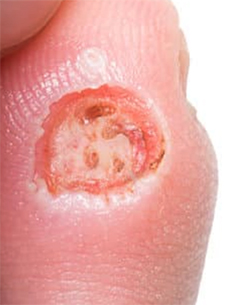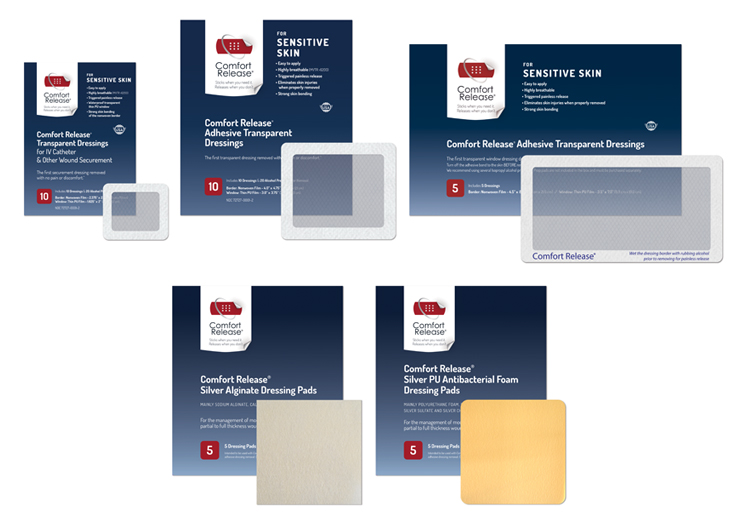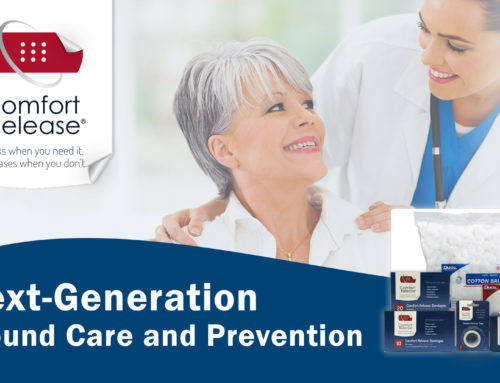
Do you know what Moisture-Associated Skin Damage (MASD) is?
According to the National Institute of Health (NIH), the term moisture-associated skin damage (MASD) defines a spectrum of injuries characterized by the inflammation and erosion of the epidermis – the outer layer of skin. This damage to the skin is a result of prolonged exposure to moisture and/or irritants such as wound exudate.1
Exudate is a normal part of wound healing. However, exudate from non-healing wounds is different. Non-healing wounds have higher levels of enzymes that degrade proteins. Enzymes such as protease interfere with the healing process by degrading growth factors.
Moisture damage to skin appears to be a result of this process:
- disrupting of the stratum corneum
- break down of the physical barrier
- increased vulnerability to mechanical forces (friction/shearing)
- inflammation from normal skin flora penetration of the disrupted barrier

So how does Comfort Release® improve patient outcomes when it comes to MASD?
Innovative products, such as those made by Comfort Release® can address the issues that cause the skin breakdown by using antimicrobial, absorbent dressing pads for the wound bed, and breathable, secure adhesive dressings to protect the periwound skin.

Breathable, transparent dressings and antimicrobial absorbent dressing pads help to prevent erythema, erosion, and infection of the periwound skin. Once cut to fit inside the wound margins, Comfort Release® absorbent silver dressing pads, covered by highly breathable Comfort Release® Transparent Dressings, retain a moist wound healing environment while promoting periwound skin health.
Learn more about our products and the problems we solve by following us on social media.
Resources:
- Woo KY, Beeckman D, Chakravarthy D. Management of Moisture-Associated Skin Damage: A Scoping Review. Adv Skin Wound Care. 2017 Nov;30(11):494-501. doi: 10.1097/01.ASW.0000525627.54569.da. PMID: 29049257; PMCID: PMC5657465.
- Voegeli D (2010) Care or harm: exploring essential components in skin care regimens. B J Nurs 19(13): 810, 812, 814
- Gibson D, Cullen B, Legerstee R et al (2009) MMPs Made Easy. Wounds International 2 1(1). Available at: www.woundsinternational.com
- Cutting KF (1999) The causes and prevention of maceration of the skin. J Wound Care 8(4): 200–1
- Colwell JC, Ratliff CR, Goldberg M et al (2011) MASD part 3: peristomal moisture-associated dermatitis and periwound moisture-associated dermatitis: a consensus. J Wound Ostomy Continence Nurs 38(5): 541–53
- Warner RR, Stone KJ, Boissy YL (2003) Hydration Disrupts Human Stratum Corneum Ultrastructure. J Invest Dermatol 120(2): 275–84
- Newman D, Preston A, Salazar S (2007) ‘Moisture control, urinary and faecal incontinence, and perineal skin management’. In: Krasner D, Rodeheaver G, Sibbald R (eds) Chronic Wound Care: A Clinical Source Book for Healthcare Professionals 4th edn. HMP Communications, Malvern: 609–27

